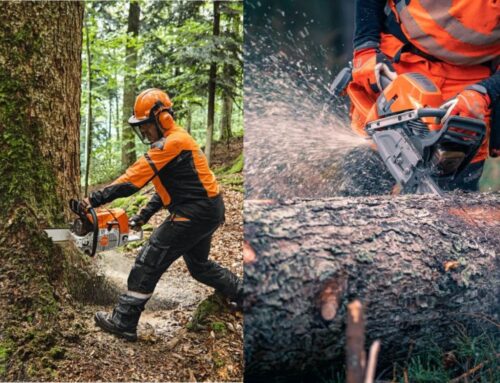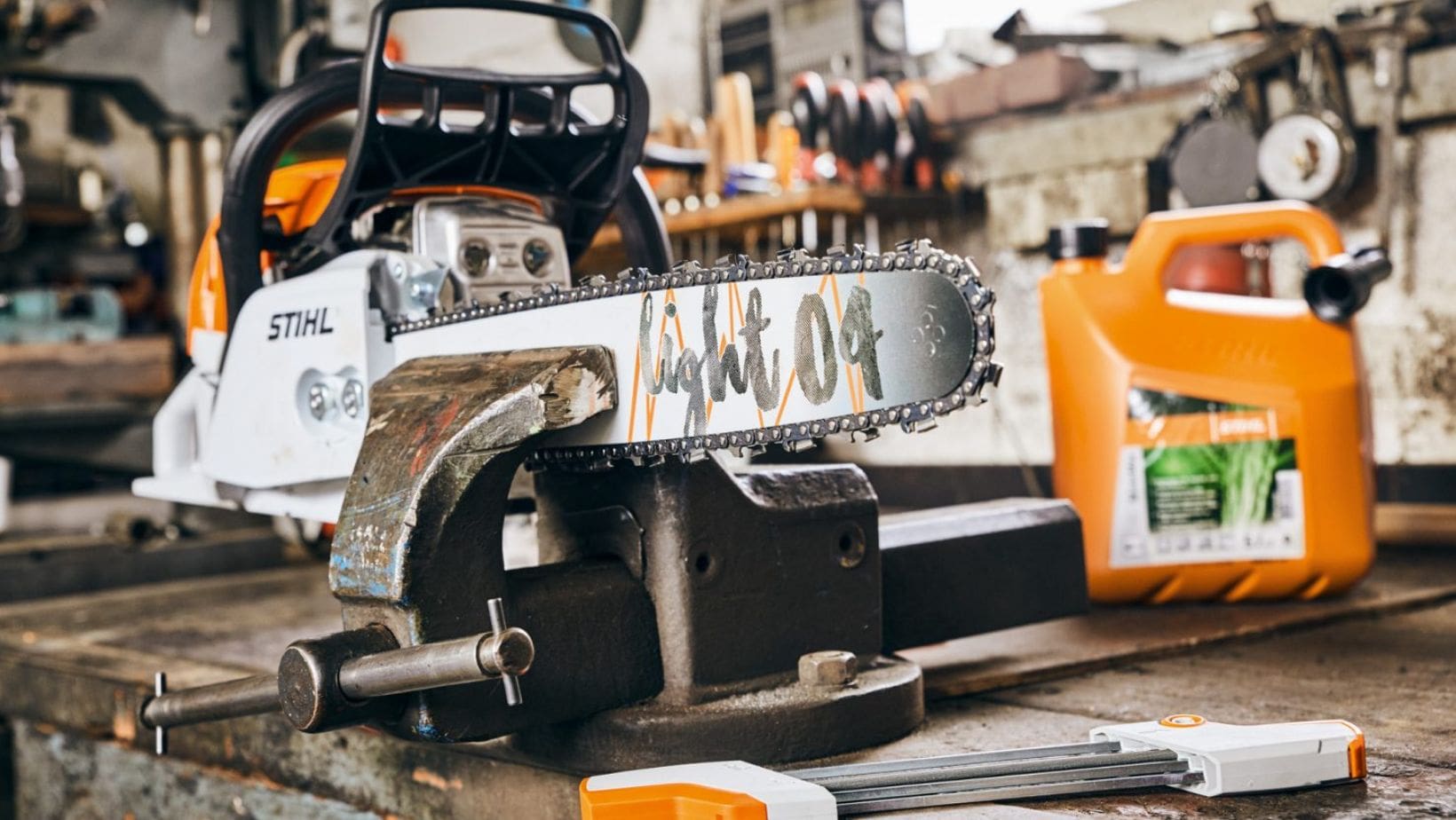
When Should I Replace My Chainsaw Chain and Guide Bar?
Regular chainsaw maintenance helps prolong the life of your chainsaw’s chain and guide bar, but there will eventually come a time when both of these parts need replacing. Here, we examine the telltale signs that show when you need to do this, both in terms of close visual inspections and if the chainsaw’s performance appears amiss.
However, before doing this, let’s take a quick look at how long you can realistically expect your chainsaw chain and guide bar to last.
How Long Do a Chainsaw Chain and Bar Last?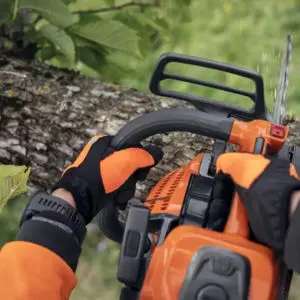
A chainsaw chain’s lifespan varies according to a series of factors. These include frequency of use, the type of wood you’re cutting, the purity of the wood, the conditions when cutting, and thoroughness of your maintenance schedule.
Therefore, if you’re a homeowner who occasionally uses your chainsaw for cutting softwood, and properly maintains the tool, the chain should last well over five years.
However, if you’re a professional chainsaw operator who regularly carries out very demanding work, you will probably need to replace your chain more than once a year.
Generally speaking, guide bars last about four times longer than chains, so changing one is by no means a regular occurrence. You can maximise your guide bar’s lifespan by turning it over whenever you sharpen the chain, so ensuring even wear.
Knowing When to Change Chainsaw Chain
Here are the most common signals telling you when to change a chainsaw chain. They apply regardless of the type or brand of chainsaw you own…
 Continuously Poor Cutting Performance
Continuously Poor Cutting Performance
If your chainsaw continues to underperform, in spite of your regular maintenance work, it is probably a sign that the chain needs replacing. Typical problems include difficulty positioning the chainsaw, laborious cutting, excessive vibrations, an uneven finish, generating more fine sawdust than chips, and smoke coming from the tool (even when properly lubricated).
Worn Down Teeth
Sharpening your chainsaw’s chain and filing down the depth gauge gradually reduces the size of its teeth, eventually to a point which impairs the teeth’s cutting performance and renders them fragile.
Many high-quality chainsaws come with a series of wear markers on their teeth, which warn you when there is a risk of this happening. So, if you’re wondering about the frequency of changing STIHL chainsaw blades, once you reach any of these wear markers, you know it’s time to act.
If your chainsaw is not designed with wear markers, as a general rule of thumb, you should replace the chain once you’ve sharpened away two thirds of the cutter teeth’s length. (This is the official Husqvarna chainsaw changing chain guidance).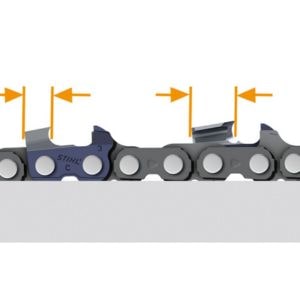
Damaged or Missing Teeth
Minor damage to your chainsaw’s teeth can usually be rectified by sharpening them to a uniform length. However, should the teeth inadvertently come into contact with a piece of metal or stone when cutting, they might chip or break, making it impossible to do this.
In these circumstances, as a uniform set of teeth is essential for safe and effective cutting, you will need to replace the chainsaw’s chain.
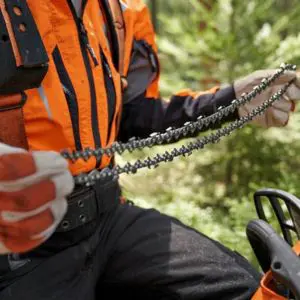 An Elongated Chain
An Elongated Chain
Few tools work harder than a chainsaw, so its chain undergoes a lot of stress when carrying out its work. This can cause it to stretch.
So, should you ever be unable to properly tension the chain, and it continues to hang loosely or slips from the bar, this is probably a sign that it has reached its tension limit and needs replacing.
Damaged Drive Links
A chainsaw’s drive links are the metal teeth located on the underside of the chain, which hold it to the guide bar.
Should they become burred, or otherwise damaged, these drive links will not fit into the bar correctly and the chain will need to be replaced.
When to Change Chainsaw Bar
A damaged guide bar can result in the chainsaw’s chain slipping or breaking during operation, so it’s vitally important that you know when to change a chainsaw bar.
The most common signs showing when to replace bar on chainsaw are as follows…
Burring and Other Clear Signs of Damage
If you cannot remove burrs on a chainsaw’s guide bar when using a flat file, it’s time to replace the bar.
Other significant signs of wear, such as bending, splintering and warping, are also likely to signal the end of the guide bar’s lifespan.
Worn Rails
The groove on the guide bar in which the drive links sit is flanked by rails. Over time, these rails can wear away, leaving the groove with insufficient depth to accommodate the drive links, which then scrape the bottom of the groove. This adversely impacts the smoothness of the chain’s movement, so the bar will need replacing.
As worn rails aren’t as clearly visible as the other types of damage detailed above, the best way to stay on top of this is to periodically inspect the rails for wear and measure the groove’s depth using a depth gauge tool.
The minimum suitable groove depths for different types of chain are detailed below.
| Chain Pitch | Minimum Groove Depth |
|---|---|
| ¼ inch P | 4 mm |
| ¼ inch | 4 mm |
| 3/8 inch P | 5 mm |
| 0.325 inch | 6 mm |
| 3/8 inch | 6 mm |
| 0.404 inch | 7 mm |
Burn Marks
Black smudge marks can sometimes appear on the guide bar after you’ve been cutting wood. They’re usually nothing to worry about, but still worth investigating.
If they easily rub off and the bar is smooth, all well and good. However, if these marks are accompanied by indentations in the bar, chances are that the bar is burnt and needs to be replaced.
Poorly Fitting Chain
As previously mentioned, this could be due to an elongated chain, but it might also be the result of a shrunk or damaged guide bar. Testing the bar with another chain should determine which of the two parts needs replacing.
 Grinding or Clicking Sounds
Grinding or Clicking Sounds
Abnormal noises, like grinding or clicking, could be caused by a damaged guide bar. So, if you notice either while you’re using your chainsaw, it’s time to investigate further and potentially invest in a new bar.
The Sprocket
Aside from the chain and bar, you should also closely monitor the chain sprocket. This is the part of the chainsaw around which the chain rotates, so it’s of vital importance to your chainsaw’s safe and effective functioning.
Just like any other part of the saw, the chain sprocket is subject to wear and tear. You should periodically check its condition using a control gauge, replacing it once the depth of the wear marks reaches 0.5 mm.
The condition of the sprocket can also be a sign that the guide bar needs replacing. To test whether or not this is the case, once your chainsaw is off and chain removed, try rotating the sprocket with your fingers. If you’re unable to do this, it could be a sign you need a new bar.
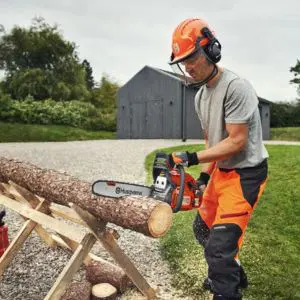 Shop Chainsaws, Chains and Bars Here!
Shop Chainsaws, Chains and Bars Here!
As the UK’s leading online chainsaw retailer, we stock an unbeatable range of chainsaws for sale. We also sell an impressive range of chainsaw chains and guide bars, so you know exactly where to come if you need to replace either of these parts.
And should you have any questions about the chainsaws, chains and bars that we sell, please don’t hesitate to contact one of our UK-based Chainsaw Experts, who will be delighted to assist you in any way they can.

